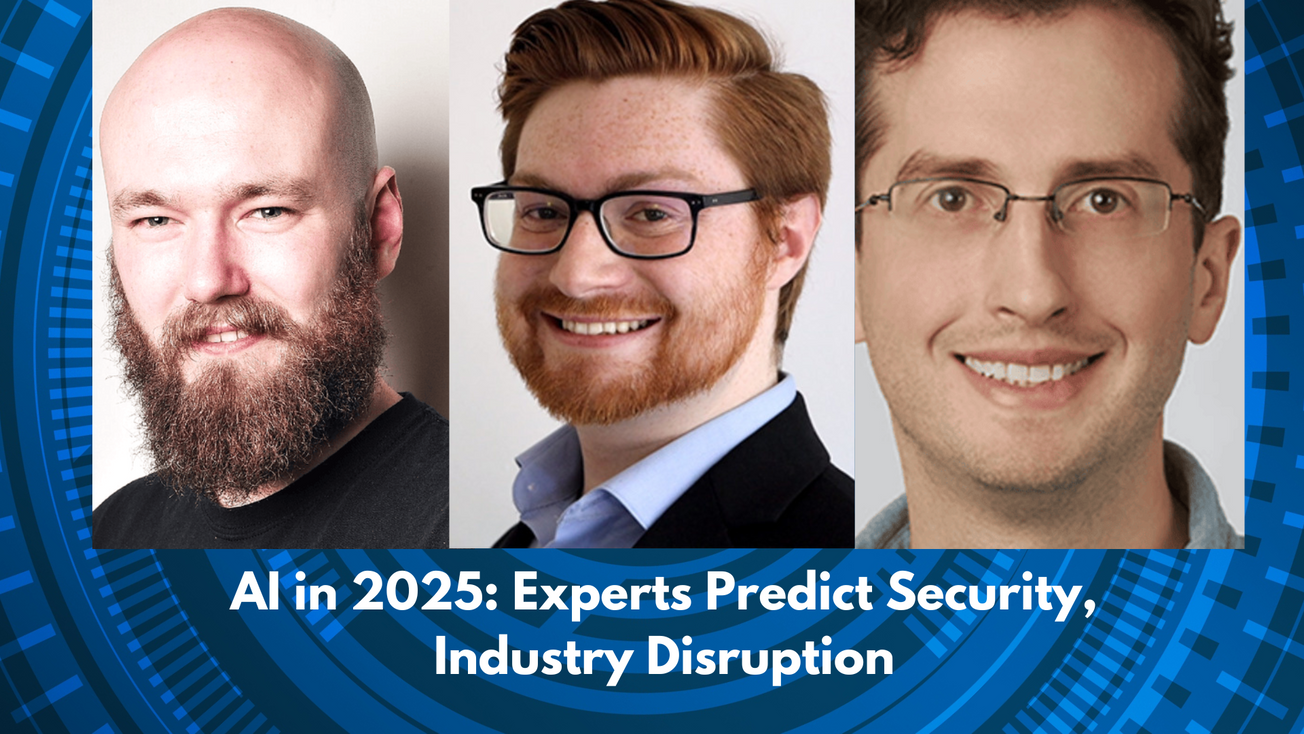The world of artificial intelligence is evolving at record speed, reshaping industries, redefining security protocols, and revolutionising how businesses operate. There is no denying that artificial intelligence has the potential to impact a wide range of areas by 2025, including cybersecurity and organisational productivity. However, what does this quickly evolving scenario hold for the future?
We consulted three top authorities on AI and data science: Dr. Stefan Leichenauer of SandboxAQ, John Hammond of Huntress, and Dr. Andrew Bolster of Black Duck. These experts describe how artificial intelligence will influence the future, from developments in AI-driven security and risk management to the rise of Large Quantitative Models (LQMs) revolutionising slow-adopting industries.

Dr Andrew Bolster, senior research and development manager (data science) at Black Duck:
“Security leaders will evolve their security posture away from ‘Vulnerability Wack-a-mole’ towards a more holistic, risk-based view of security, assisted by AI driven agents to maintain context, triage and actionability of their application threat surfaces. As AI becomes established as a development partner, engineering leaders will have to proactively invest in simplified, potentially standardised, developer enablement programmes, moving further away from ‘pet' systems and services. While the explosion of AI driven capabilities has made much ‘heat’ in the security conversations, serious questions are now emerging around the total cost-benefit when it comes to using third party or partner LLM applications with sensitive data, particularly where it comes to diverging and varying legal and regulatory compliance regimes.”

John Hammond, principal security researcher at Huntress:
“LLMs will become an extremely unprotected attack surface. As cliche and saturated as a the "AI" conversation is, it is here to stay -- good, bad, and ugly -- and while organizations and businesses worked in a frenzy to add the new hotness to their product or service, security has fell to the wayside. Whatever shape it takes as a either chatbot or some other black box, LLM adoption will continue to grow, but left unchecked. Prompt engineering or other adversarial tricks will end up exposing sensitive information or internal training model data will be leaked as threat actors go after the new boom of "AI".

Dr Stefan Leichenauer, VP of engineering at SandboxAQ:
“By the end of 2025….
- Advancing towards autonomous AI agents and Large Quantitative Models (LQMs)- Companies will adopt a more AI-centric, agentic strategy for problem-solving, which means creating AI systems which can make decisions based on interactions with their environment. But behind these agents we will need more than just language models — this is where Large Quantitative Models (LQMs) come in. LQMs will harness vast amounts of quantitative data, combined with physics-aware architectures, to tackle a diverse range of use cases. Expect revolutions in areas like drug discovery, materials design, healthcare diagnostics, financial modelling, and industrial optimisation.
- AI will begin to influence industries that have traditionally been slow adopters -Agriculture, construction, manufacturing, and supply chain management are examples of areas where AI will be very impactful. These are also industries where pure language models are not likely to fully solve the problems. Quantitative AI powered by Large Quantitative Models will be required. This expansion of AI capabilities across diverse sectors will create many new roles that will focus on blending industry-specific expertise with AI proficiency, enabling professionals to optimise the application of AI technologies within their respective fields.
- AI infrastructure will be a key differentiator - Competitive advantage in AI will shift from purely algorithmic advancements to the scale and efficiency of physical infrastructure. Custom-built data centres and optimised hardware will become essential for supporting massive models, making investment in specialised facilities and energy resources critical for sustaining AI innovation and growth.
- Empowering a workforce with AI-driven productivity - Companies will prioritise building AI expertise and developing intuitive internal tools to increase employee productivity across all functions. By hiring and collaborating with AI specialists, companies will seek to embed AI into daily operations and workflows, ensuring that every team has access to user-friendly and productivity-boosting AI tools. This approach will democratise AI across the company, creating an environment where employees at all levels can leverage AI for smarter decision-making, streamlined processes, and accelerated innovation.
- AI model development and deployment - Right now, AI products tend to operate on low margins, so key players are betting that a self-sustaining business model will emerge. They’re heavily investing in resources like data, electrical power, and compute, and we can expect them to continue building ever-larger models. This has been the most cost-effective way to achieve publishable results and capture market share. At the same time, AI consumers are likely to shift towards smaller, more task-focused models to save on costs. While broad generalisability sounds appealing, it often doesn’t deliver the commercial ROI that specialized models can provide.
- Data security will take up a larger role - As companies start rolling out AI capabilities, they will want to extend their use to increasingly sensitive areas of their business, which will jumpstart a new wave of new and pivoting existing startups, as well as consultants, that begin to highlight security in their marketing.”








